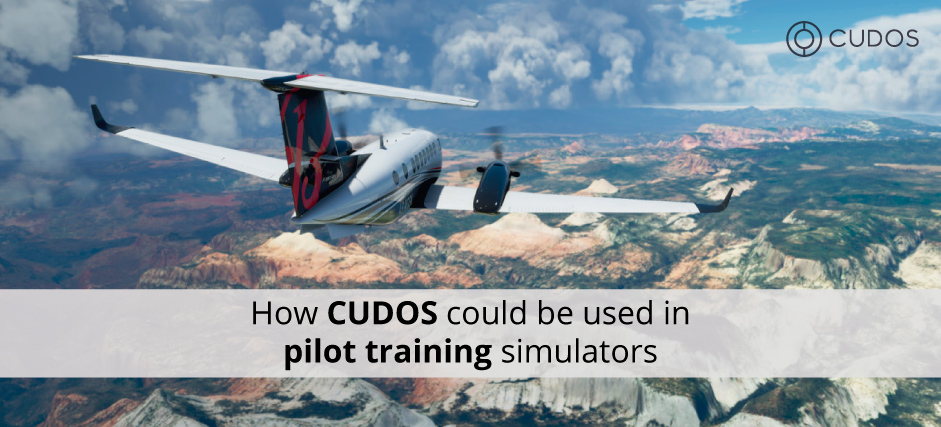Pilot simulators require great computing power. The CUDOS network, with its computing power distributed in the cloud, could be efficiently applied for the execution of training simulators with great realism, thanks to the benefits of this blockchain technology.
Training simulators
Training simulators have been used for a long time to be able to represent virtually real life situations, which serve to perform maneuvers by people who are carrying out the practices, but without taking risks in real life. Currently, the computational demands for this type of system are increasing, given the increasing need to render a more realistic terrain.
These training simulators are different from a simple virtual representation, such as the one that occurs in a game, since they need to have more exact and realistic parameters to be able to adjust as much as possible to what would be a real life situation but without having to take the risks that arise in those cases.
New technologies offer greater opportunities to be able to perform virtual training with great precision. CUDOS presents a distributed computing architecture in the cloud, which is ideal to be used by companies in charge of developing and executing simulators, since it can obtain great computing capacity with much lower costs and cutting-edge results.
Training for air pilots
In the case of air pilots, we have a clear example, where there is a need for training that reduces risks to a minimum, since it requires long hours of practice in various fields, in order to perfect the necessary techniques to control a plane. By means of simulators using CUDOS technology, the necessary conditions could be generated.
Through distributed computing in the cloud, we can obtain a wide computing capacity that adjusts to the specific needs for each training plan. Whether specific terrain or specific climatic conditions are needed, through the use of CUDOS blockchain we can achieve it, having great speed and with a significant reduction in costs for hardware use.
This is where one of the main characteristics of the use of this type of system lies, and it is the one referred to investments in physical equipment, in order to obtain the necessary computing capacity. With the use of CUDOS this is totally different, since the necessary quota is contracted to be able to carry out the execution that we are requiring.
Training for racing drivers
In the area of racing drivers, it is where we also find the use of simulators to be able to carry out all the necessary practices, in order to reduce risks and achieve recognition of the different tracks to which the runners are subjected. Drivers currently run in various categories, therefore we find a wide variety of tracks and vehicles that must be available for training.
One problem with this type of system is updating, since a constant increase in data is required in order to load modifications or additions. This situation is solved by the CUDOS technology allowing the incorporation of information, in a distributed manner, so that the technical execution can be carried out without problems.
This is very important, because when a pilot undergoes specific training using a simulator, he must have the guarantees that the conditions in which he is practicing are adequate and that they conform as much as possible to the reality, because any omission in the details can cause serious risks when it has to be transferred to the real experience of running a race.
Conclusion
We can say that CUDOS technology is ideal both to run and to support simulation systems related to pilot training, either for flights or for competitive races. Through the distributed computing capacity, not only are operating costs reduced, but also that risks are almost minimized when having to transfer training to real life.

